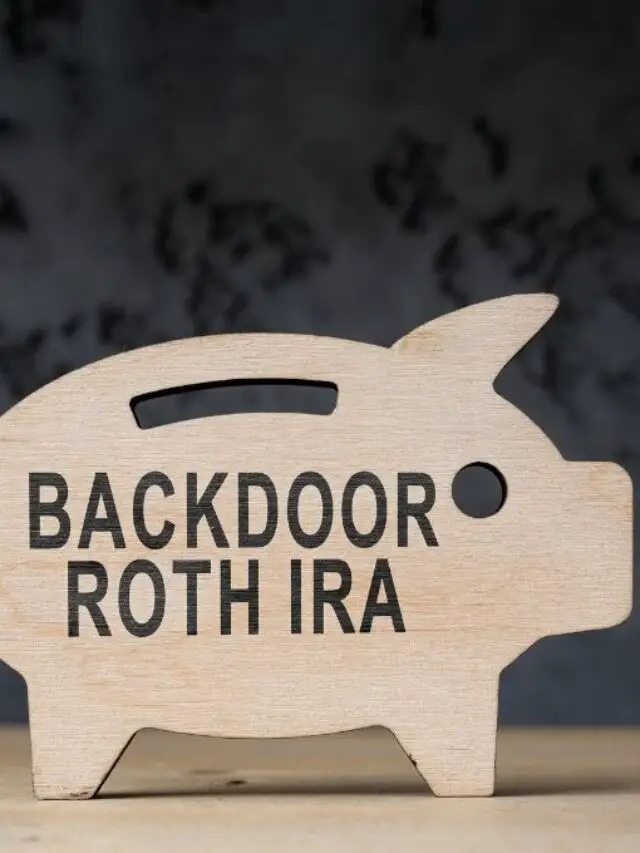Greetings to you all. The subject matter under scrutiny in this article comprises automated teller machines, or ATMs — an indispensable innovation that has unequivocally revolutionized how we engage with our financial assets. Within these paragraphs, a comprehensive elucidation awaits what precisely an ATM is, an exploration of its manifold services, and a critical dissection of ancillary topics such as fees and withdrawal constraints. Your attention, then, is most cordially invited.
Table of Contents
✍ Key Takeaways
- Types of ATMs: Various categories of automated teller machines offer unique features and services; comprehending these could make your ATM interactions smoother.
- Service Inventory: ATMs aren’t just for cash withdrawals; they offer a broad palette of services such as bill payments and fund transfers.
- Fee Structure: Know the fees you could be incurring—ranging from withdrawal fees to international charges—to manage your finances shrewdly.
- Withdrawal Limits: These limits aren’t set in stone. There are methods for negotiating higher withdrawal ceilings with your bank.
- Dodging Fees: With savvy strategies like using your own bank’s ATMs and maintaining a minimum account balance, you can circumvent various fees.
What Constitutes an Automated Teller Machine (ATM)?
In rudimentary terms, an automated teller machine embodies an amalgamation of software and hardware designed to expedite sundry financial transactions devoid of human oversight. Erected first in the annals of the late 1960s, these electronic marvels endure as a linchpin in our modern financial infrastructure.
A Taxonomy of Automated Teller Machines: Varieties and Nuances
You may labor under the misapprehension that all ATMs serve identical functions under uniform proprietorial structures. Yet, in actuality, automated teller machines bifurcate into discernible categories. Have a look at this:
| Type of ATM | Sub-Type | Key Features |
| Bank ATMs | Basic ATM | Dispenses cash, prints mini-statements. |
| Full-Service ATM | Offers check deposits, fund transfers, and more. | |
| White Label ATMs | Limited Service | Cash withdrawal only, usually in retail locations. |
| Enhanced Service | Numerous services but unaffiliated with banks. | |
| Brown Label ATMs | Bank-Owned, Outsourced | Hardware owned by banks but operated by third parties. |
| Smart ATMs | Custom Services | Includes personalized financial advice. |
| High-Tech Interactions | Features like biometric scans, QR codes. | |
| Drive-Through ATMs | Car-Friendly | Designed for transactions without leaving the car. |
| Limited Service | Offers fewer services due to quick nature. | |
| Portable ATMs | Event-Focused | Seen at festivals, fairs, and other events. |
| High Fees | The convenience often comes with higher fees. |
Navigating the labyrinthine terrain of automated teller machines becomes far less daunting when you’re armed with this tabulated wisdom. Indeed, we’ve dissected a world often taken for granted but loaded with nuance. Dare I say, you’re becoming an ATM savant?
An Inventory of Services Offered by Automated Teller Machines
While the principal function of an ATM might seem restricted to the dispensation of currency, this underestimates the range of its operational versatility. Just have a look at the services provided by an ATM:
| Service Category | Specific Services | Brief Description |
| Cash Transactions | Cash Withdrawal | Take out money from your account. |
| Cash Deposit | Add money to your account. | |
| Account Information | Mini-Statement | Receive a compact account summary. |
| Balance Inquiry | Check the available balance in your account. | |
| Bill Payments | Utility Bills | Pay electric, water, and other utility bills. |
| Credit Card Bills | Settle your monthly credit card debt. | |
| Fund Transfers | Between Own Accounts | Move money between your own accounts. |
| To Other Accounts | Transfer funds to different bank accounts. | |
| Check Services | Check Deposit | Deposit checks via ATM. |
| Check Cashing | Cash checks instantly, subject to account balance. | |
| Additional Services | Change PIN | Alter your Personal Identification Number. |
| Print Account Statement | Get a detailed account statement. | |
| Mobile Top-up | Recharge your mobile phone’s balance. |
Now you’re not just dipping your toes into the services offered by automated teller machines—you’re diving in. Whether you’re juggling bills, managing assets, or merely craving the tactile feel of paper currency, ATMs have your back. Or shall I say, your wallet?
Pro Tip:
Regularly utilize the balance inquiry feature. Remaining abreast of your financial standing can help you make informed decisions and avoid overdraft fees.
Decoding the Fee Structure: Unveiling the Hidden Costs
In a world enthralled by the siren song of convenience, it’s easy to overlook the lurking monies that trickle out of your pockets, even as automated teller machines fulfill your immediate needs. Here’s a list of fee structures with approx. fee range (which varies from bank to bank and state to state):
| Fee Type | Average Cost | Description |
| Withdrawal Fee | $2 – $5 | Charged when you withdraw cash from an ATM not affiliated with your bank. |
| Balance Inquiry Fee | $1 – $2.50 | Imposed for checking your balance at a foreign ATM. |
| Deposit Fee | Rare, but up to $2 | Some banks charge for depositing cash or checks at an ATM. |
| Transfer Fee | $1 – $3 | Fee for transferring funds between different accounts through an ATM. |
| International Fee | $3 + 3% of withdrawal | When using an ATM in another country, you might face this fee. |
| Monthly Service Fee | $5 – $15 | Some banks impose this for providing ATM services. Often waivable. |
| Statement Print Fee | $1 – $3 | If you request an account statement printout at the ATM. |
| Card Replacement Fee | $5 – $25 | Fee for replacing a lost or stolen ATM card. |
| Overdraft Fee | $25 – $40 | Imposed when you overdraw your account. |
Unveiling these concealed costs, associated with automated teller machines, can certainly alleviate those shocker moments at the end of the month when you peruse your bank statement. Consider it your personal Rosetta Stone for navigating the financial hieroglyphs that are ATM fees.
Withdrawal Limits: The Invisible Ceiling
You’ve probably hit that wall: the disconcerting moment when the ATM politely, but firmly, informs you that you’ve exceeded your daily withdrawal ceiling. What establishes this elusive boundary? A combination of risk management protocols and pre-set bank policies dictate the monetary cap on withdrawals from automated teller machines. Fear not, for it’s not a life sentence—measures do exist to nudge these limits upwards.
Raising the Bar: How to Elevate Your Withdrawal Limit
Eager to gain greater financial latitude? The path usually entails a labyrinthine array of bureaucratic negotiations, encompassing everything from a meticulous review of your financial activity to submitting formal applications. Substantiate your claims with concrete proof of your fiscal responsibility, and the bank may just reconsider your imposed limitations.
Tips for Dodging Those Pesky Fees
While paying some fees may seem as inevitable as the rising sun, astute financial maneuvering can help you elude many a monetary snare. Among strategies: are frequenting ATMs that fall under your bank’s umbrella and maintaining a minimum account balance that waives fees.
Pro Tip: Stay loyal to ATMs operated by your bank. This affinity reduces the likelihood of additional withdrawal fees and could save you significant coins over time.
A Comparative Analysis of American Bank’s ATM Fees
Nestled within this section, a table would visually disentangle the labyrinthine structures of ATM fees across dominant American banks.
| BANK | NON-NETWORK ATM WITHDRAWAL FEE | NON-NETWORK INTERNATIONAL ATM WITHDRAWAL* |
| Bank of America | $2.50 | $5.00 |
| Capital One | $2.00 | $2.00 plus 3% |
| Chase | $3.00 | $5.00 |
| Citi | $2.50 | N/A |
| First Horizon Bank | $3.00 | $3.00 |
Transparency here is of the essence. Identifying which bank proves to be the most lenient on your wallet can steer your banking choices more sagaciously.
Conclusion: The Last Word on ATMs
Having navigated the arcane world of automated teller machines, we emerge enlightened. We’ve lifted the veil on ATM mechanics, deconstructed fee structures, grappled with withdrawal limits, and even wrestled with fee-avoidance stratagems. Armed with newfound wisdom, you stand poised to interact with ATMs not as a hapless user, but as an informed consumer.
Additional Resources
Beyond the scope of this article, there exists a treasure trove of further reading. Whether you’re intrigued by the history of automated teller machines or keen on exploring advanced functionalities, an ocean of knowledge awaits.
Call to Action
Don’t just absorb; act. Implement fee-avoidance techniques in your daily transactions and question your financial institutions. You wield the power to shift the narrative around automated teller machines from one of blind usage to informed interaction.
Frequently Asked Questions (FAQs)
Intriguing queries persist. Here, we tackle those elusive questions that didn’t find a home within the body of this article.
- How secure are ATMs?
Surprisingly secure, although not impervious to illicit activities like skimming. Stick to machines within bank premises for enhanced safety. - Do ATMs ever malfunction?
They do. Mechanical hiccups occur. In such cases, immediate contact with the bank is crucial. - Can I deposit checks in any ATM?
Not universally. Only ATMs of certain financial institutions will offer this convenience. - What to do if my card gets stuck?
Promptly alert your bank and potentially disable the card via mobile banking apps to prevent unauthorized access. - Is there a difference between the ATMs in the U.S. and those abroad?
Absolutely. Fee structures and functionalities can deviate wildly. - What is the average lifespan of an ATM?
Typically, a decade, although maintenance can prolong operationality. - Why do ATMs need maintenance?
For the same reasons any machine does: wear and tear, software updates, and cash refilling. - Do all ATMs dispense only cash?
Not exclusively. Some now offer a range of services, including event tickets and even gold bars in certain extravagant locales. - Is there a best time to use an ATM?
Off-peak hours provide a more secure and swift experience. - Do I have to stick to my own bank’s ATMs?
You don’t. But venturing out may cost you in fees unless you’re savvy about it.

Prashant Chauhan
Author @ Finance RuffleMeet Prashant Pratap Chauhan, the savvy founder behind Finance Ruffle, a hub for sharp financial insights and expert analysis in the realm of finance blogging.









